Water to human body is lakes to the earth. Covered by huge scale of blue waters, oceans or lakes are the magnificent blood and the best decoration on earth. Excellent saying goes that lakes are the brilliant and vital eyes of earth when looked down from high land. Indeed, embellished by those beautiful green or blue lakes, people benefit from more fantastic sceneries evolved from the pearls like lakes. Great admiration owes to the magic production from natural powers first, and the surprising harmony and reflection with marvelous sightseeing around. Even background of ancient history and local customs adds extra mystic atmosphere and flavor into the serene lakes. The following overview of the top 10 most beautiful lakes of China are the best examples to prove the specialized water beauty scattered on the vast China.
Type: Natural Inland Saltwater Lake
Area: 4,435.69sq km (Greatest Depth: 32.8m)
Elevation: 3260m
Best Travel Time: July ~ August
Ticket Information: Erlangjian Scenic Area - 100RMB in High Season (April 16~October 15) & 50RMB in Off Season (October 16~April 15), 20RMB for Green Tour Bus; Bird Island Scenic Area - 100RMB in High Season & 60RMB in Off Season, 25RMB for Green Tour Bus; Sandy Island Scenic Area - 70RMB in High Season & 35RMB in Off Season, 30RMB for Green Tour Bus; Fairy Bay Scenic Area - 60RMB in High Season & 30 RMB in Off Season.
Open Hours: 08:30~17:30 (Erlangjian, Bird Island); 08:30~19:00 (Fairy Bay).
Recommended Visiting:1~2 days
Location: Juncture of Gangca County, Gonghe County and Haiyan County, Hainan Tibetan Autonomous Prefecture, Qinghai Province.
Literally means indigo lake in Tibetan, Lake Kokonor in Mongolian, Qinghai Lake rates top beautiful lake with title of the largest inland saltwater in China. The most fascinating Qinghai Lake is the excellent picturesque scene of blue lake, golden rape blossom, and mountains in the distance during July to August. Used to be the essential pass of Ancient Silk Road and Tang-Tibet Ancient Road, Qinghai Lake has two national highways 109 and 315 running across currently.
Originates from the rainfall and surface runoff up to over 40 rivers, Qinghai Lake is located in northeast Qinghai Tibet Plateau and northwest Xining City, Qinghai Province, surrounded by four high mountains ranging from 3600~5000m, splendid Datong Mountain in north, majestic Riyue Mountain in east, rolling Qinghai South Mountain in south and craggy Rubber Mountain in west. The best travel season to Qinghai Lake falls on the autumn months when the vast prairie wear a golden coat of rape flowers, refreshing fragrance drifts with the wind, dotted herdsman tents looks like stars in the sky, herds moves as clouds, charming sunrise and sunset consisting of a poetic painting.There have two son lakes, Gahai Lake (saltwater lake - 48sq km) and Erhai Lake (freshwater lake - 8 sq km) in eastern shore and vast prairie around Qinghai Lake.
Driving through Huangyuan County (52km from Xining), the first spot is Riyue Mountain, a natural dam in east Qinghai Lake elevated over 4000m above sea level and the Qinghai Tibet Highway runs cross the Riyue Pass here. The second spot is Daotang River flowing into Qinghai Lake from east to west. Then tourist can choose the most popular way - rent a car to experience all kinds of scenic spots around Qinghai Lake.
Further drive on Nation Highway G109 will get to the Erlangjian (about 130km from Xining), one of the best viewing points of Qinghai Lake where tourists can enjoy combination of culture experience and spots fun like water race and yacht driving. Since the first torpedo launch experimental base was set up here, Erlangjian is also called Base151. Heima River, 220km of west Xining is the starting point of road round Qinghai Lake. The 70km long natural landscape in the western road to Bird Island from Hema River is one of the dreamlike sections of Qinghai Lake. In northern Qinghai Lake, the famous best site to watch crowds of migratory birds from south China and Southeast Asia during spring and summer is the Bird Paradise - Bird Island consisting of Haixishan and Haixipi. Qinghai Lake offers more beauty for all kinds of travelers, such as the Sand Island – the biggest crescent island within the lake, where world-famous Qinghai Tibet Railway passes, Fairy Bay – an important wetland and home for swans, Chaka Salt Lake – China’s Mirror of the Sky located in 298 km from west Xining City.
Notice:The best time to watch birds is in the end April and late July. And when you enjoy the birds scenes, please don’t disturb the wild birds.
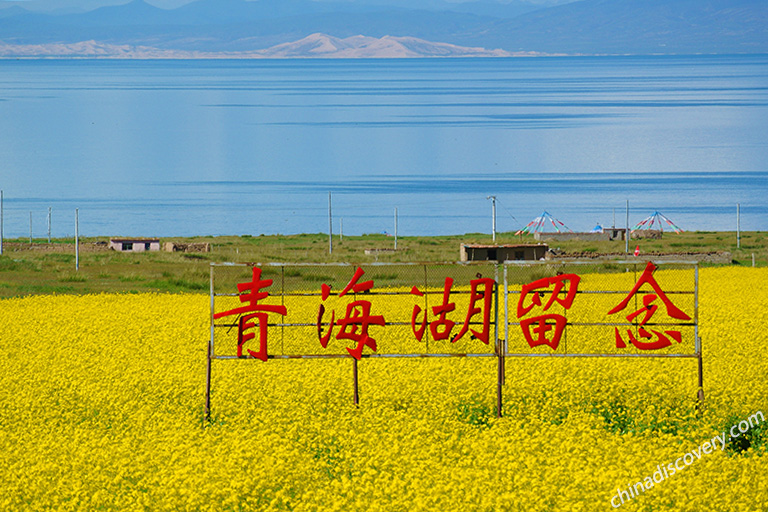
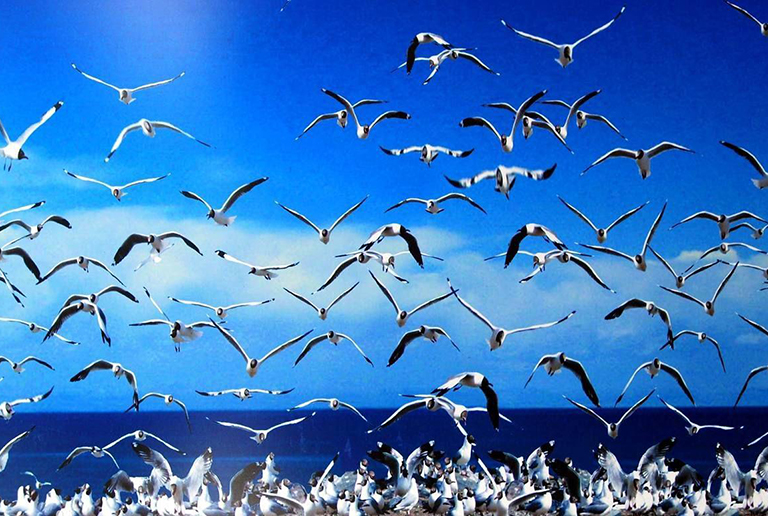
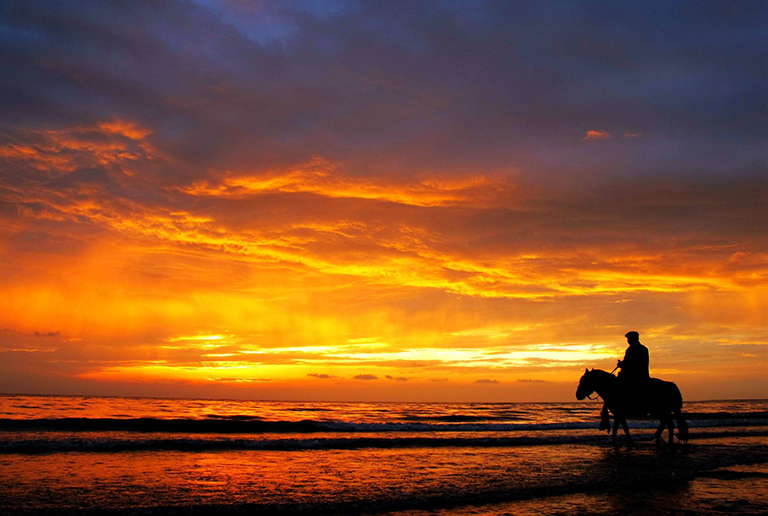
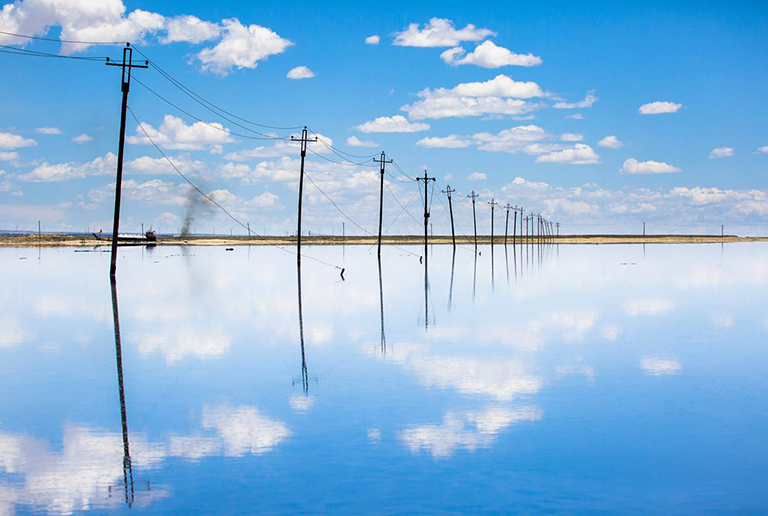
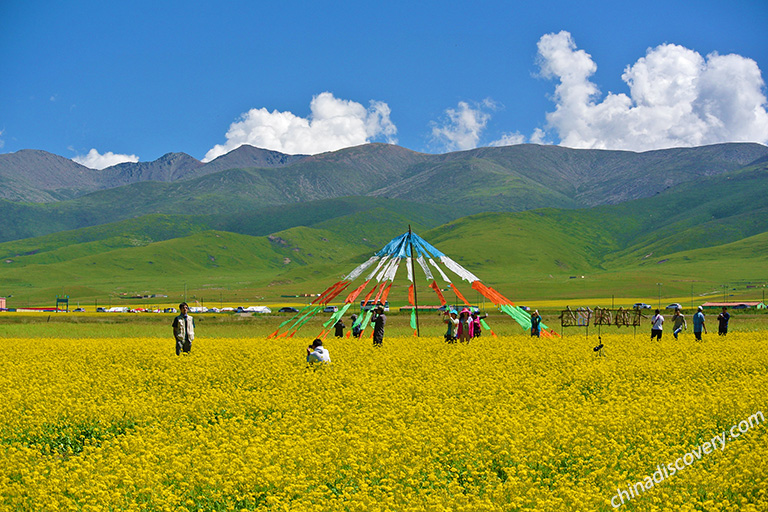
Type: Alpine Lake & Inland Freshwater Lake & Moraine-dammed Lake
Area: 45.73sq km (Greatest Depth: 1181.5m)
Elevation: 1374m
Best Travel Time: June ~ September
Ticket Information: 185RMB for Kanas Scenic, 60RMB for Hemu, 50RMB for Baihaba, tour bus fees are excluded.
Open Hours: 8:30 ~ 19:30
Recommended Visiting:1~2 days
Location: Kanas Scenic, Burqin County, Altay City, Xinjiang.
Kanas refers to beautiful and mysterious lake in Mongolian. Situated in northernmost Xinjiang, Kanas Lake is one of the most beautiful lakes in China, which enjoys honors of National AAAAA Scenic Spot, National Geopark, National Forest Park, China Nature Reserve and National Cultural Heritage. The gorgeous Kanas Lake colored pure snowy mountains and vast green forests is hailed as the Fairyland on Earth.
With depth of over 188m underwater, Kanas Lake is the deepest moraine-dammed lake originating from glacier meltwater and rainfalls and source of Kanas River. Spectacular mystery of Kanas Lake comes from the thousand meters long levee of logs, gathered by blowing wind against the current, huge unearthly lake monster alleged and amazing scenes of clouds sea and Buddha light only happen during sunshine after raining.
Enter the valley of Kanas Lake, Camel Neck Bay (1250m) bumps into sight, looks like a bending camel neck for waters here turn in great angle and flow to far north basin. Then pass through Huaqiu Valley to another major spot - Wolong Bay, a lying dragon shape island beset by emerald lake and lush forests on shore. Perfect appearance of Wolong Bay can be viewed from the 1500m high observation platform in eastern highway. Extending 1km farther, a beautiful arc - Moon Bay weaves like a curved moon dropped into the verdant gorge, a blue jade belt twining in the luxuriant ground for the riverbed forms several half-moon bays and two unique footprint style small sandbeaches, and waters here present different kinds of colorful looks within every single day and each season. Therefore, Moon Bay, the essence site in Kanas Lake, offers endless wonderful pictures for photographers.
More 3km goes to another best photography site - Immortal Bay. It is also called Pearl Bay when water dazzles like numerous pearls scattering apart under the sunshine, a fairyland with inky peaks, green lake and colorful trees in the mist-shrouded painting. If you wants have a fabulous panorama of Kanas Lake, the View Yutai (2030m) is a must-visit deck with 660m height to watch broad Kanas Lake and the surrounding high steep and imposing peaks. More spots including corridor, stone, and rock art can be found in north Kanas. Culture fans can be fulfilled via the discovery tour in Baihaba Village, the most beautiful village in northwestern reserved unique folk costume, custom and religion of Tuvas.
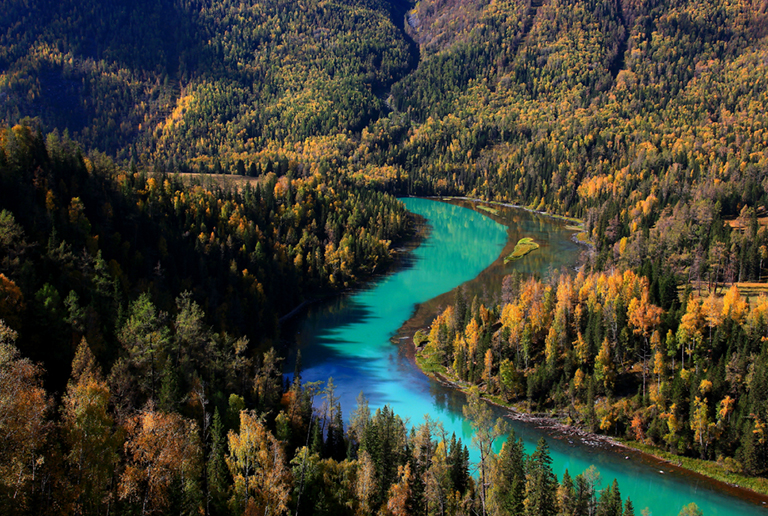
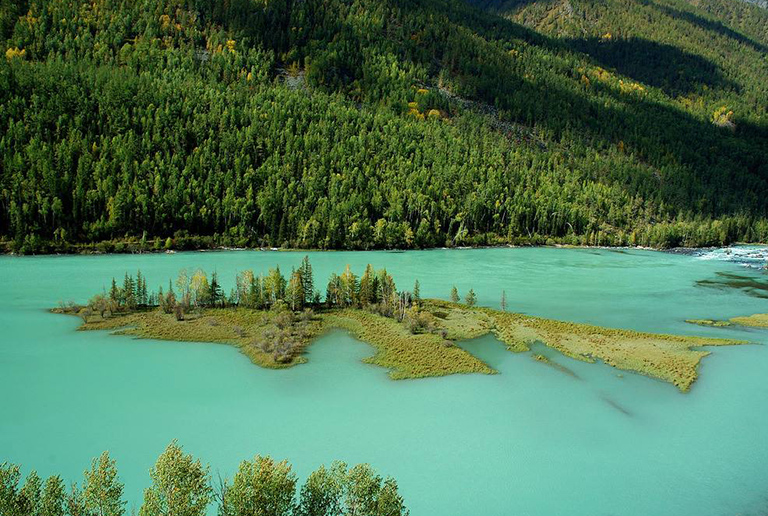
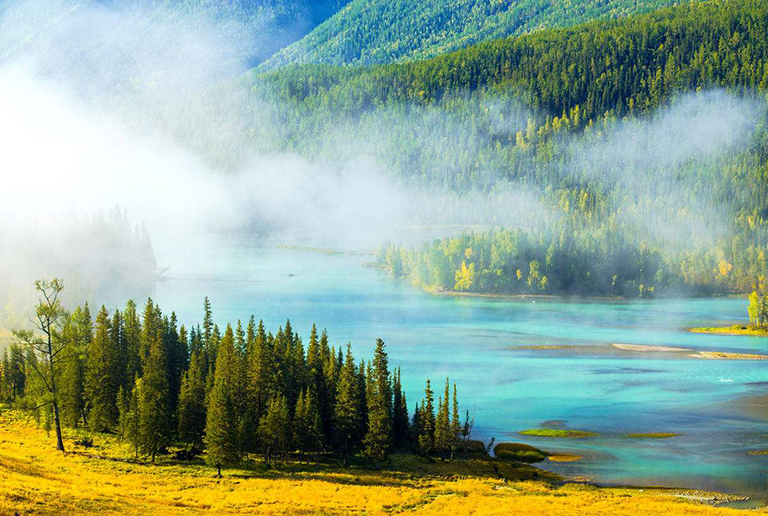
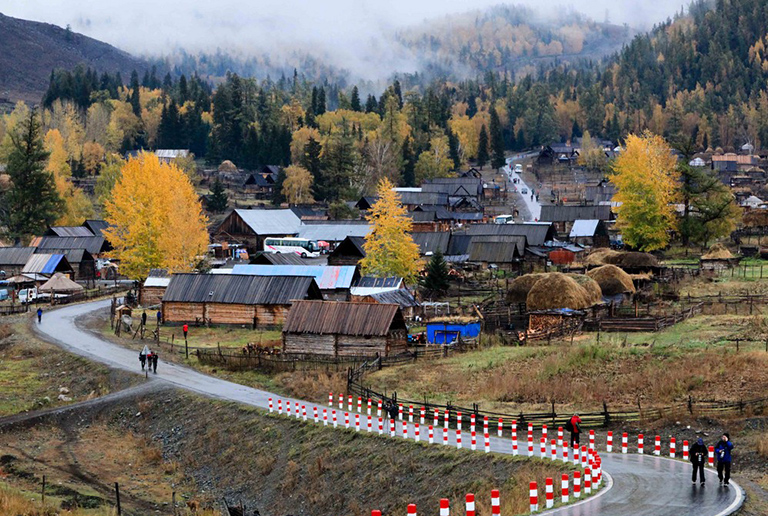
Type: Saltwater Lake
Area: 1920sq km (greatest depth: over 120m)
Elevation: 4718m
Best Travel Time: June ~ September
Ticket Information: 120RMB in High Season (May ~ October) & 100RMB in Off Season (November ~ April)
Open Hours: 08:30~17:30 (Erlangjian, Bird Island); 08:30~19:00 (Fairy Bay).
Recommended Visiting:1~2 days
Location: Damxung County, Lhasa, Tibet.
Worshipped as one the top three holy lakes in Tibet with Yamdrok Lake and Manasarovar Lake, Namtso Lake ranks the second largest lake of Tibet and the third largest saltwater lake in China. Namtso literally means Heaven Lake in Tibetan, is a rectangular gemstone fallen in the arms of snow mountains. Vast expanse of azure blue water, distinctive trails linked from Marnyi Stones, many flickering prayer flags, the pure and holy Namtso Lake appeals to numerous visitors not only for its beauty beyond description but also for the top sacred honor in Tibet Bonismo while lots of locals or Buddhists will make pilgrimage around. Awarded the third beautiful lake elected in Chinese National Geography, each year the azure blue water shows in different season to glut eyes and purify souls.
Sits in central Tibet region and about 250km to south Lhasa, Namtso Lake gets guard from great Nyenchen Tanglha Mountains in south. And there are 5 bylands stretching into the lake from various directions, incarnation of Five Dhyani Buddhas according to Buddhist tale. Tashi Dor, a 10sq km limestone peninsula in southeastern is the most famous byland within Namtso Lake where most accommodation and major spots concentrate. Spread north body into waters, Tashi Dor presents fantastic Karst landforms, including central hill, plenty of pillars and peaks connected by stone bridges, many stalactite grottoes, sacred Tashi Temple, mountain cave where Padmasambhava practiced Buddhism. Circle around the byland, tourists will watch the Yingbin Stone decorated with many colorful prayer flags, Husband & Wife Stone - door god of Namtso Lake from local legends, more temples with natural Buddhist statues.
Notice:
1. For the high altitude, huge temperature difference between day and night and strong solar radiation on Namtso Lake, travelers should prepare warm clothes, sunblock and medicine to relieve altitude sickness, avoid fast running.
2. Plateau weather changes frequently, thus tourists need to check the weather and road suitable for going in advance.
3. Accommodation in Namtso Lake is simple and basic without private bathroom. If one plans to stay over to continue a two day sightseeing, remember to prepare yourself mentally.
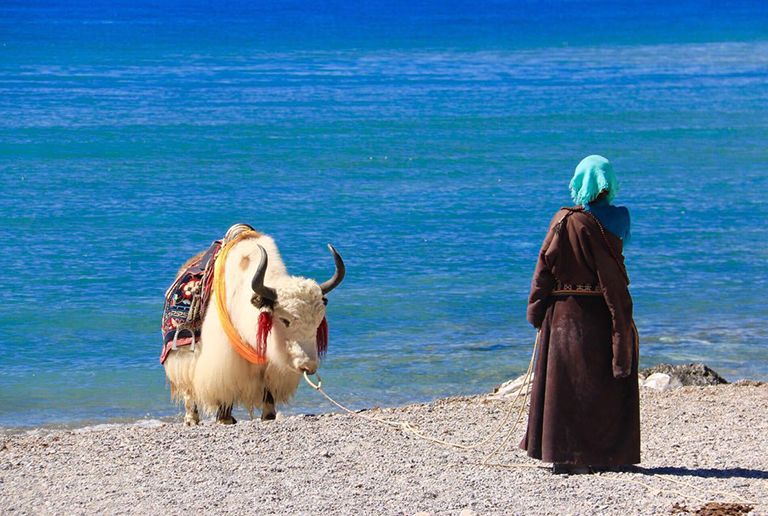
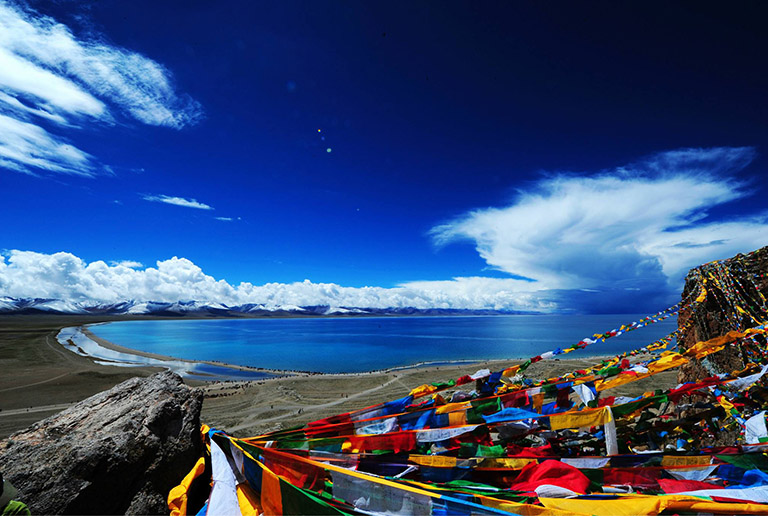
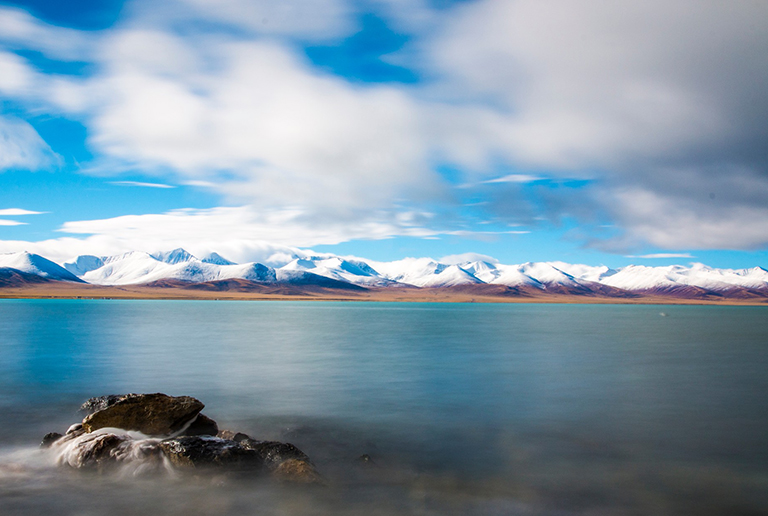
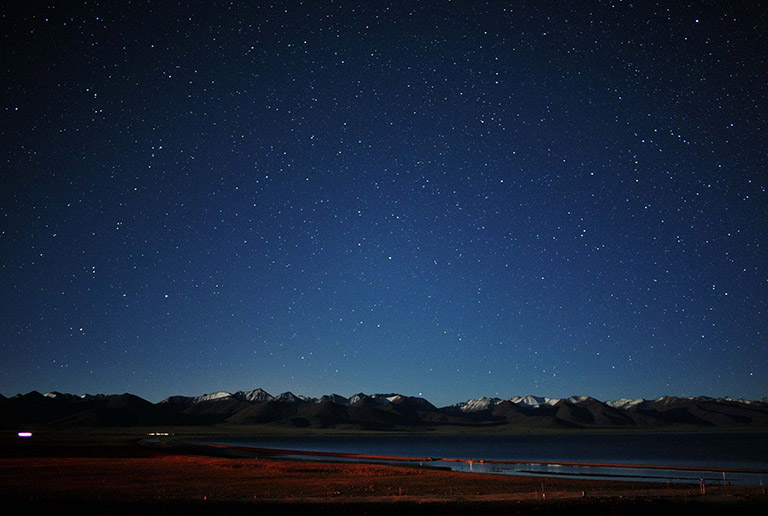
Type: Volcanic Lake
Area: 9.82sq km (greatest depth: 373m)
Elevation: 2189.1m
Best Travel Time: July ~ September
Ticket Information: 125RMB; Eco-environmental Tour Bus and SUV expenses are excluded.
Open Hours: 6:30 ~ 16:00 (North Slope Scenic Area) & 6:30~ 15:00 (Western Slope Scenic Area).
Recommended Visiting:half day
Location: Fusong County, Baishan City, Jilin Province.
Naturally formed by the erupting volcano long time ago, Tianchi Lake on Changbai Mountain, or Changbai Mountain Pool in the Sky is the largest and highest volcanic lake in China and the world’s deepest highland lake. The oval Tianchi Lake seems amagnificent jasper studded in the grand peaks in Changbai Mountain. It is still the natural lake border between China and North Korea, where can watch the other side peak in the neighbor.
All around stands towering mountains in great numbers, the crystal aquamarine lake is the headstream of the three major rivers in northeastern China, Songhua River, Tumen River and Yalu River. Embraced by 16 peaks in surroundings with one outlet of Changbai Waterfall, the serene clear Tianchi Lake already becomes a mystery-land where monster appears sometimes and drags horses into deep lake.
Tourists can get to the lake located on top of the dormant volcano on Changbai Mountain from north, west and south slopes, consequently different scenery will get from various viewing directions. Midsummer is the best season to visit Tianchi Lake when the melting water emerges much blue than sky, clouds and fog are the least, higher chance to reveal its true face. Cold winter days will turn the lake into a completely white mirror covered with thick ice and snow. Jiangjun Peak (2749m) lying in North Korea is the highest peak encircling Tianchi Lake, and in west side, White Cloud Peak (2691m) is the highest peak in northeastern China, Tianwen Peak (2670m) enjoys a good viewing sight of this miraculous blue jewel.
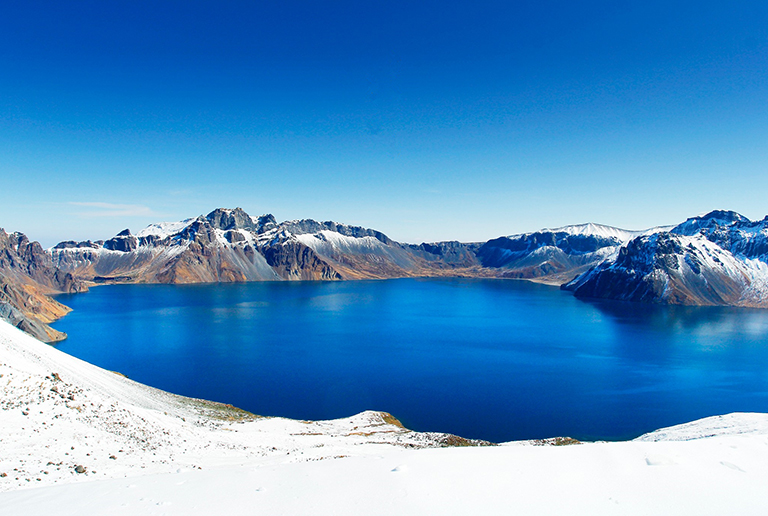
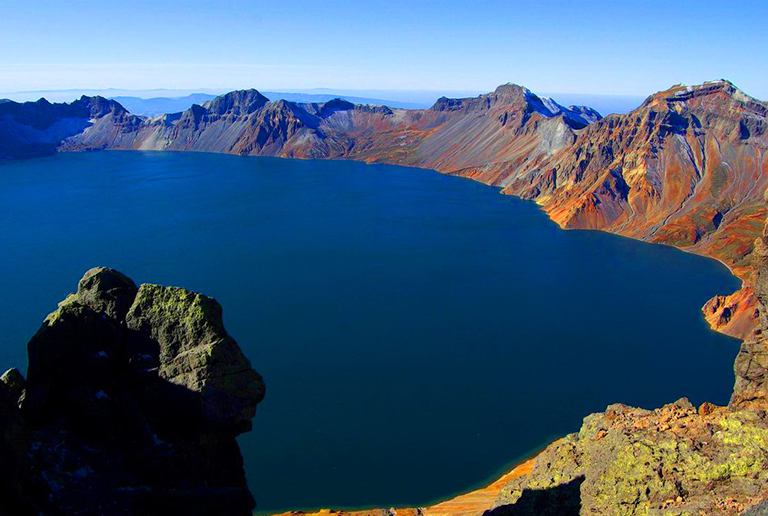
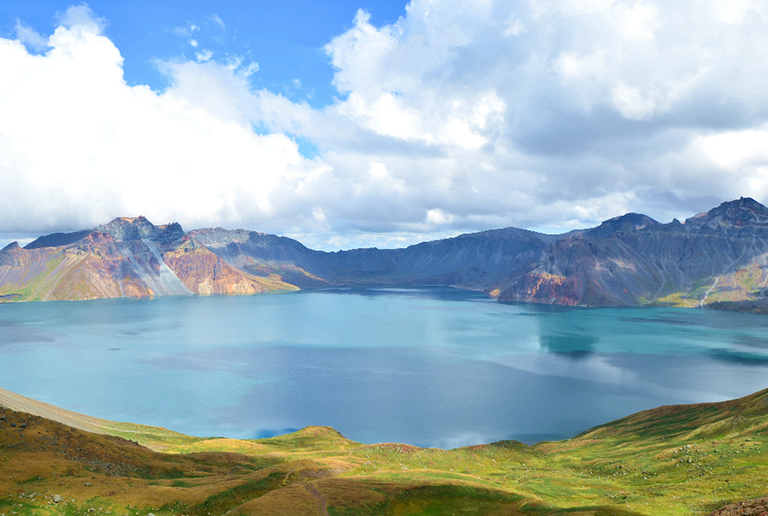
Type: Freshwater Lake
Area: 6.39sq km
Elevation: 3260m
Best Travel Time: All the Year Round, especially in March ~ May, September ~ November
Ticket Information: Free Visiting
Open Hours: Full Day
Recommended Visiting:3 ~ 6 hrs
Location: No.1 Longjing Rd, West Lake Scenic, Xihu District, Hangzhou City, Zhejiang Province.
West Lake in west Hangzhou is the only World Cultural Heritage, one of the top ten scenic sites in China and the landmark sights and essence of Hangzhou. Great litterateur Su Shi in Song Dynasty once spoke highly of the superb beauty of Hangzhou West Lake - West Lake in Hangzhou tops all the 36 west lakes in China.
During each season, West Lake has unique charm, gorgeous landscape in Spring, infinite lotus in Summer, artistic moonlight reflected in lake in Autumn and oblique red glum in the poetic winter painting. Separated by Lonely Hill, White Embankment, Su Embankment and Yanggong Embankment, West Lake contains five areas, including Outer West Lake, West Inner Lake, North Lake, Little South Lake and Yue Lake based on scale. For the White and Su Embankments pass over the lake, three more small islands stands in central region and Leifeng Pagoda on Sunset Mountain faces against northern Baochu Pagoda on Stone Mountain across the lake, an amazing location of one mountain, two pagodas, three islands and banks, five lakes in West Lake thus formed.
History shows West Lake was a part of Qiantang River, the later sedimentation results of two sandspits approaching each other, ultimately the West Lake came into being in the west shoal. Current marvellous landscape of West Lake covers the Lonely Hill - the biggest island in West Lake which is located between inner and outer lakes with height of 38m, Leifeng Pagoda - an octagon five-stored wooden pavilion-style tower on south lake shore, Baochu Pagoda - a seven stored pagoda on northern lake region which is originally built in Five Dynasties, Three Pools Mirroring the Moon, Middle-lake Pavilion, Ruangong Islet and ten gorgeous natural scenes. Tourists can make a circuit around West Lake through bike, cruise boat and sightseeing car.
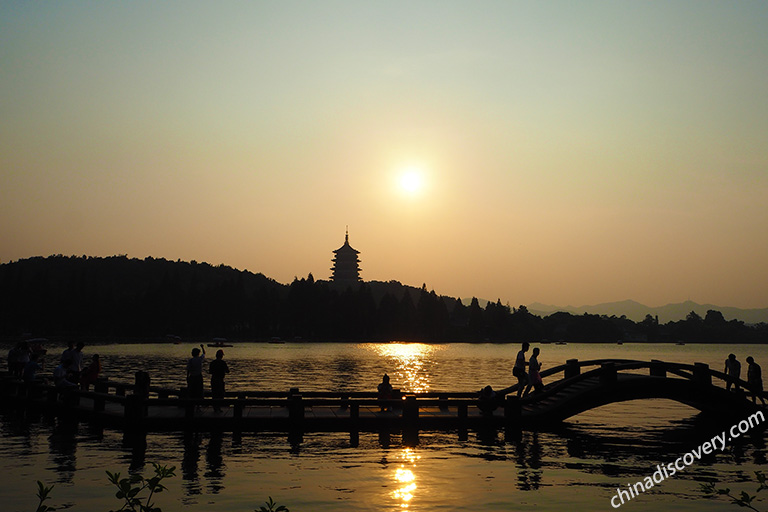
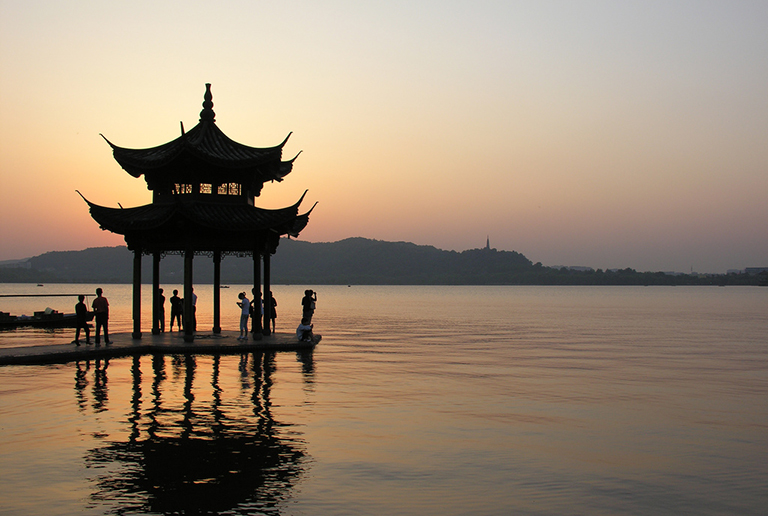
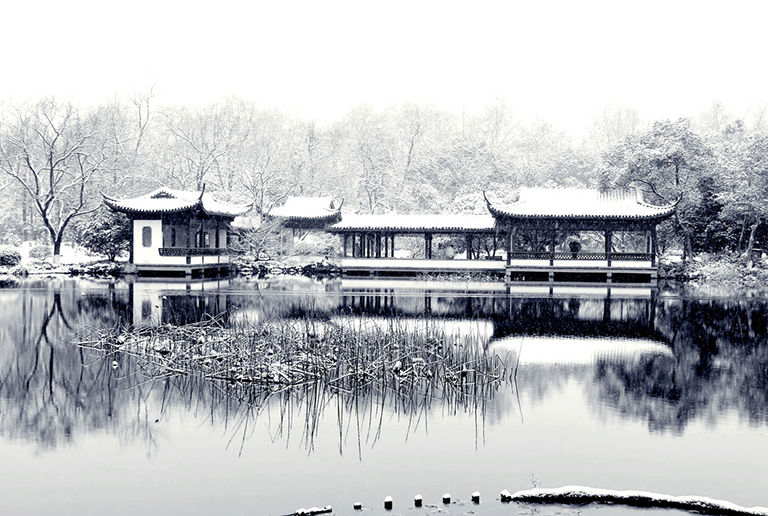
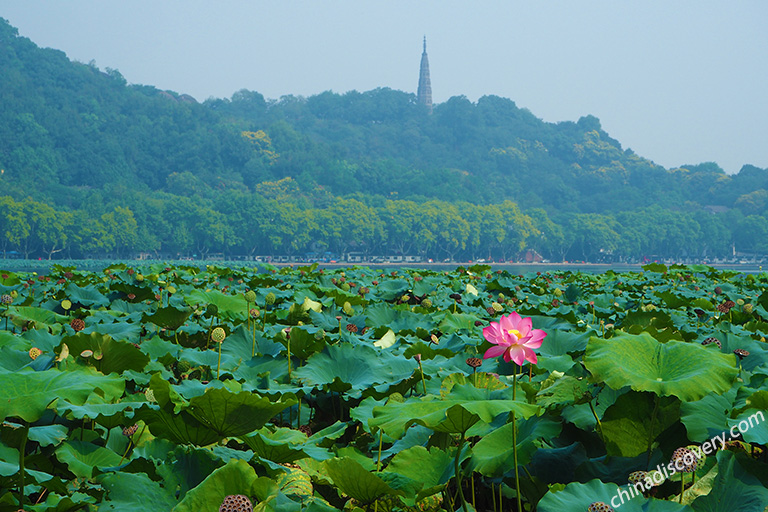
Type: Freshwater Lake
Area: 58.8sq km (greatest depth: 105.3m)
Elevation: 2690m
Best Travel Time: March ~ October (July ~ September is rainy season)
Ticket Information: 100RMB for Lake Tour, 20RMB for Mosuo Family Visit, 10RMB for Princess Former Residence, 10RMB for Mosuo Museum, boating fee is changeable on distance.
Open Hours: Fully Day
Recommended Visiting:2 ~ 3 days
Location: Shared both by Luguhu Town, Yanyuan County, Liangshan Yi Autonomous Prefecture, Sichuan Provicne & Yongning Village, Ni
As the highest lake in Yunnan Province and the third deepest freshwater lake in China where mainly lives Mosuo, Yi nationality, Lugu Lake originally named as the lake in the valley, for in Mosuo langue of Naxi nationality, Lu means valley, Gu refers to inside. Located in southwest Sichuan and southeast Qinghai Tibet Plateau, the fascinating Lugu Lake is the best hub for Shangri-La travel circuit, made up of 5 islands in the lake, 4 byland and 1 long island on lakeshore, all in different shapes.
Primitive customs of maternal family and mysterious Male-leaving Marriages of Mosuo who live along the lake is honored as the Living Fossil of Human Matrilineal Society and the Last Kingdom of Women in the world. American scholar once described Lugu Lake a wonderful living place for immortals.
The northern Lege Peninsula embraced by Gemu Goddess Mountain (3770m - the highest peak around Lugu Lake) is the most famous and gorgeous spot. When summer comes, boating in the southeastern Caohai Lake (Grass Sea), a fairyland with of flora and fauna in an area of 10sq km definitely make sure you escape from the bustles. Later autumn is the best season of photographing Lugu Lake when trees on shore all dressed in various colors, flowers bloom into idyllic painting. During winter, lots of rare birds, like swan, black-necked crane and etc usually migrant here to survive, making it the best time to watch waterfowls. Tourists interested in local culture can pay a visit to the Mosuo Museum – the only theme museum systematically exhibiting Mosuo history, culture and folk customs. More pretty natural spots including Bay of Goddess - a peaceful harbor honored as eastern Hawaii, Dazuhu Bay at foothill of Goddess Mountain, Lover Beach, Daluoshui Village with old ethnic buildings.
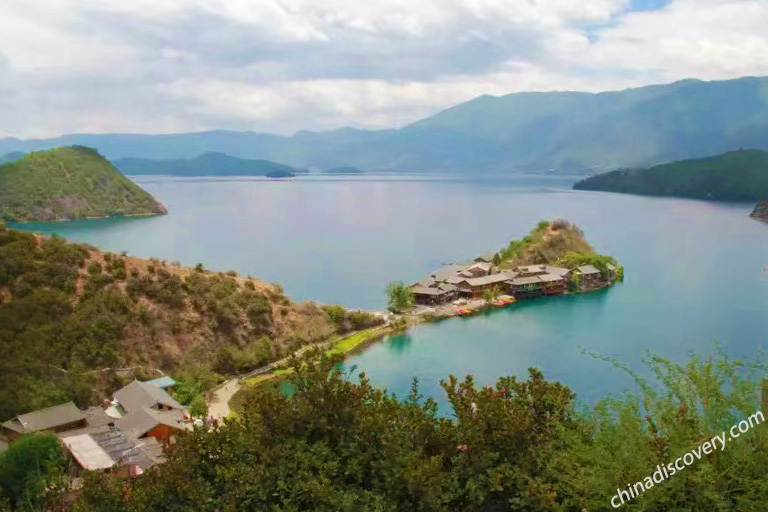
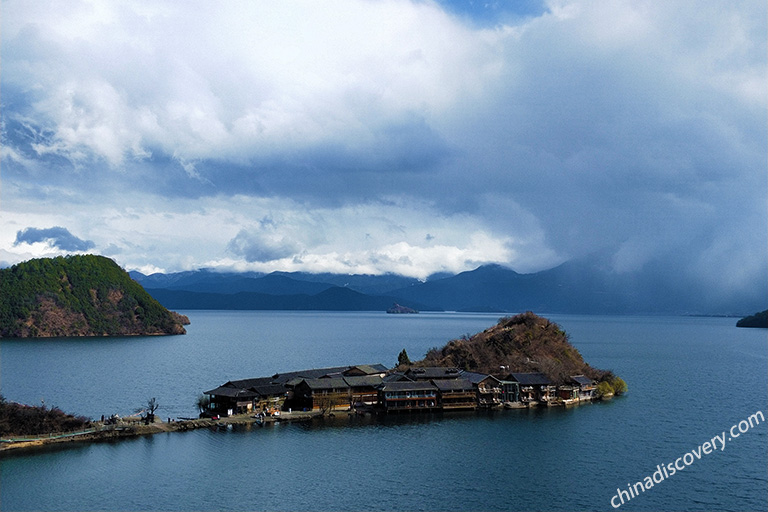
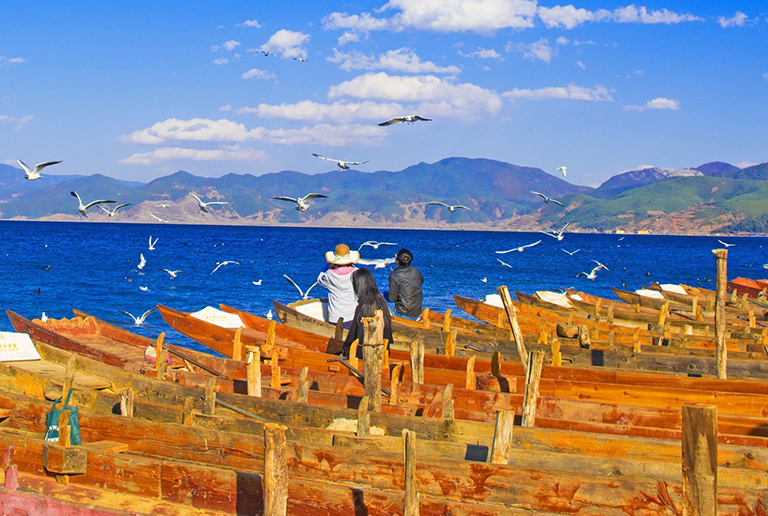
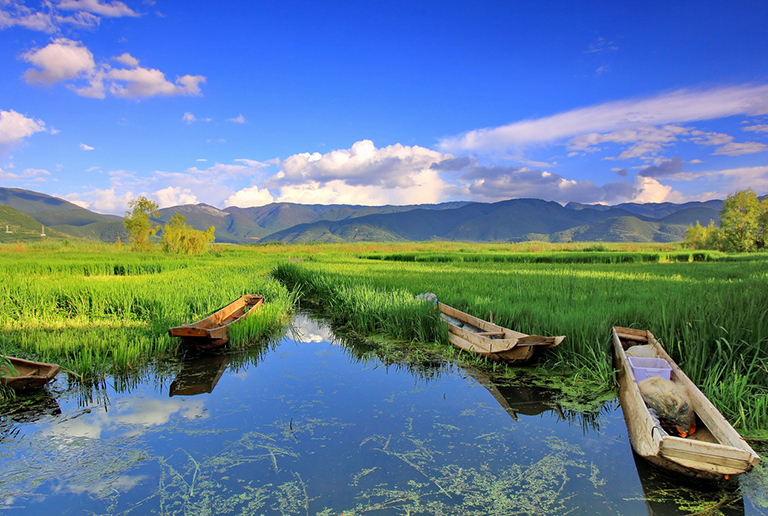
Type: Inland Saltwater Lake & Landslide Lake on Plateau
Area: 675sq km
Elevation: 3260m
Best Travel Time: September ~ November
Ticket Information: Free Visiting (take photos with landmarks and inner visiting will be charged)
Open Hours: Full Day
Recommended Visiting: 1h
Location: Nagarze County, Shannan Prefecture, Tibet.
Yamdrok Lake - jasper lake and upper coral lake in Tibetan language is one the three most holy lakes in Tibet with Namtso Lake and Manasarovar Lake. Elevated at 4,441m (14570ft) above sea level, it is a dark jade eardrop lying in the arm of giant mountains and a jade belt decorated with alpine snow land, and location of the largest hydropower station and the highest pumped-storage hydroelectricity in Tibet.
Making a circular pilgrimage around Yamdrok Lake equals to one time in Lhasa, which will harvest bless from Buddha for a whole year, local Tibetan believe that. Based on the sacredness, the lake is also the biggest paradise for various kinds of wild birds resting on 21 small islands.
About 70km to northeast Lhasa, Yamdrok Lake is the largest inland lake in Himalaya Mountains, the top beautiful lake in southern Tibet regions. Climb across the Gangbara Pass (5,030m/16503ft), the beautiful irregular sapphire appears and spread its body to 70 times of West Lake in Hangzhou. Longer drive from the pass to lakeside needs nearly 30 mins and then tourist can feast eyes and minds on the marvelous beauty of Yamdrok Lake along the road. In-depth tour of Yamdrok Lake includes visiting couples of small island, Seduo Island, Mother Deer & Deer Island and Bird Island. Noijin Kangsang Peak, a traditional holy mountain (7,206m/23,642ft) of La-track Kangri Hill (a natural separate stretch between Yamdrok Lake and Yarlung Zangbo River) lies in the western region. Join our Tibet tour starting from Lhasa to Gyantse, Shigatse or Mount Everest must be the most recommended way to enjoy Yamdrok Lake when passing by.
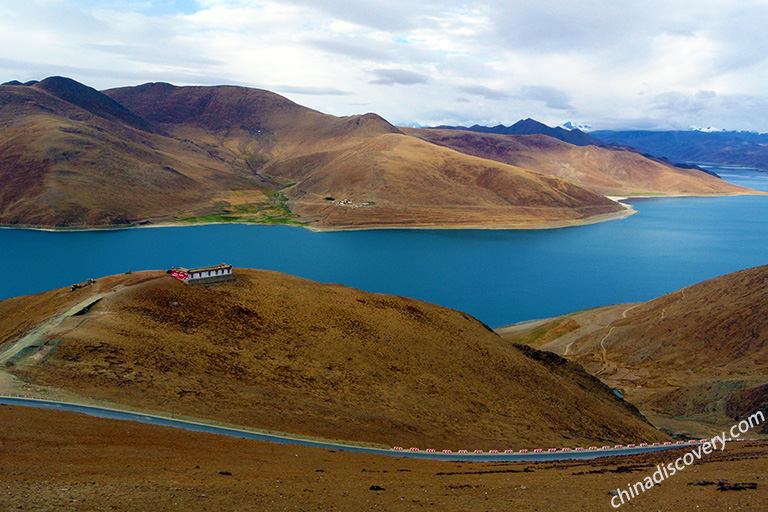
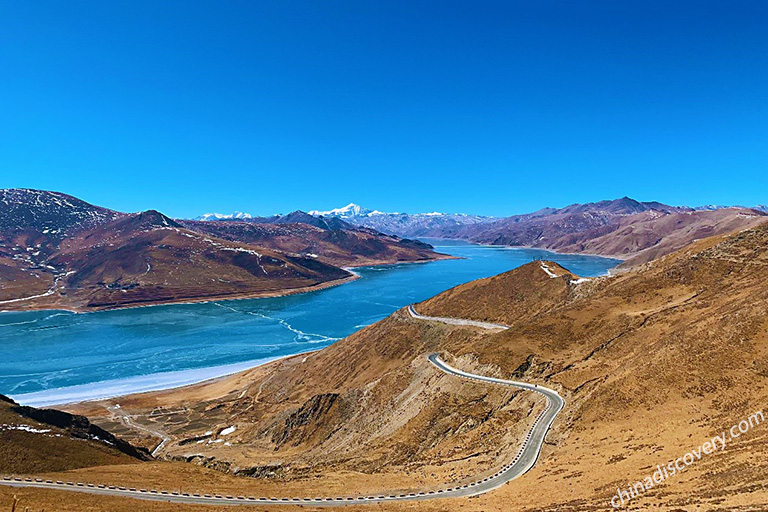
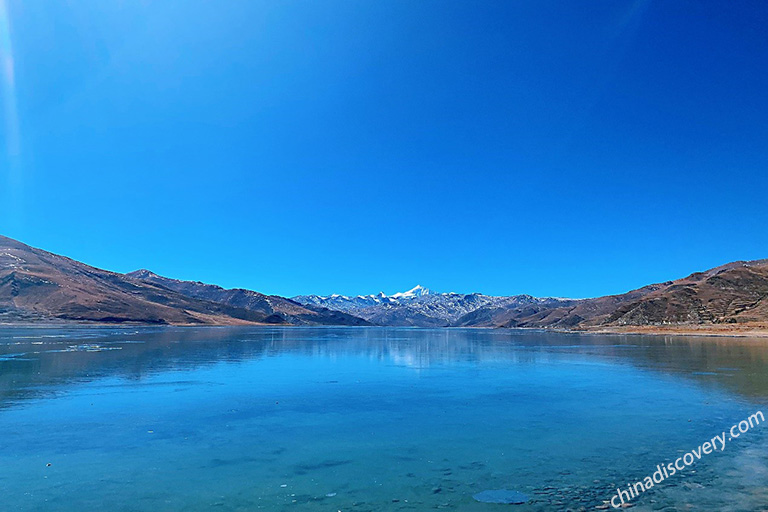
Type: Natural Freshwater Lake
Area: 256.5sq km
Elevation: 3260m
Best Travel Time: All the Year Round, especially in June ~ August.
Ticket Information: Free Visiting of Erhai Lake & Erhai Park & Dali Ancient City, 50RMB for Nanzhao Culture Island, 10RMB for Yuji Island, 20RMB for Yan Family Mansion Museum; boating fee is excluded.
Open Hours: Full Day
Recommended Visiting:half day ~ 2 days
Location: No.1 Erhe South Rd, Xiaguan, Dali City, Yunnan Province.
Situated in suburb of Dali City, the second largest freshwater lake – Erhai Lake looks like a narrow human ear with two outlets. Moon on Erhai Lake is one of the four major sights of Dali when the jade moon reflecting on the peaceful lake every mid-autumn festival. Not only rich in aquatic resources and high quality waters, the lake is a beautiful scenic, mother lake in the Bai nationality.
Making a circuit along the 30km coastline whether by bike, motorcycle or car, and taking a boat is the best way to enjoy the immaculate crystal gem lying in mountain groups, experience the fantastic serenity in the poetic painting. On northeast coat, Shuanglang Town, site of Nanzhao Culture Island (one of the three islands of Erhai Lake), is one best charming site surrounded by hills on three sides, Chicken Foot Mountain to the east and Little Putuo Mountain to south. In southeast coast, the Erhai Park consisting of pavilion, swimming pool, botanic garden, zoo and amusement park is a perfect viewing point of Cang Mountain and Erhai Lake and summer resort with moderate water temperature, even suitable for winter swimming. Clockwise tour to the Dali Ancient City in west, a historical essence with lots of ancient gate towers, academies, temples and ruins, streets, Chongsheng Temple and Three Pagodas, also called Three Pagodas of Dali, is one important China’s pagoda built in Tang Dynasty. Further 17km tour arrives to the northwestern Bai Nationality Residences of Xizhou, a characteristic architecture complex and construction heritage in China. Winter spectacle of sea gull on the lake adds more delights for lake circumnavigation.
Notice:
1. To protect environment around the Erhai Lake, personal feeding to sea gulls is highly not advised.
2. Cycling near Shuanglang Town maybe little tough for some road are under repair.
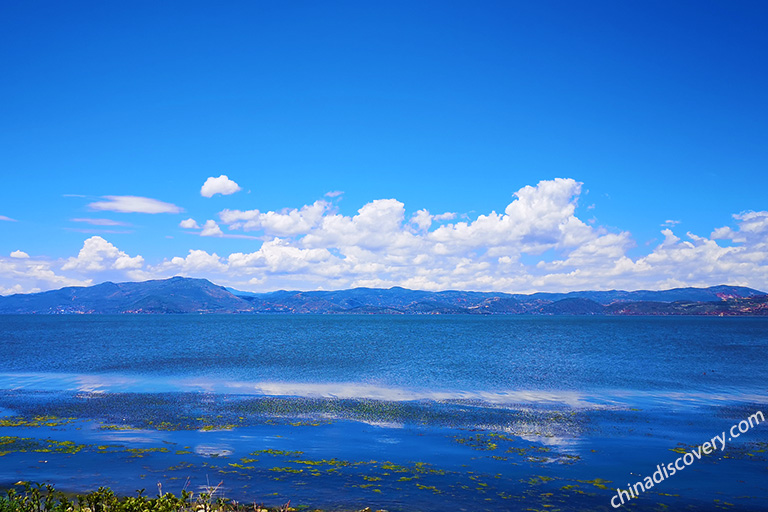
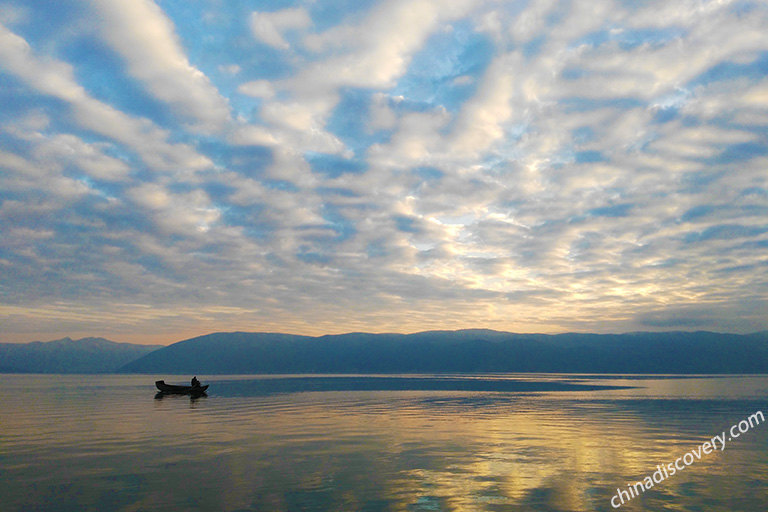
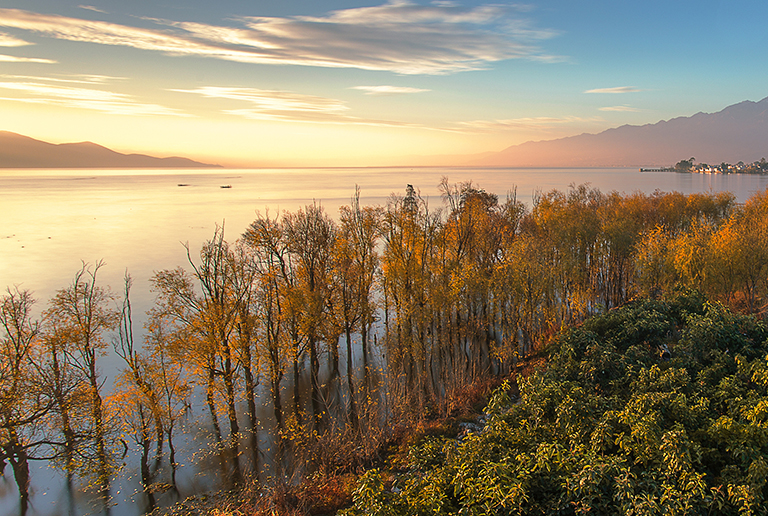
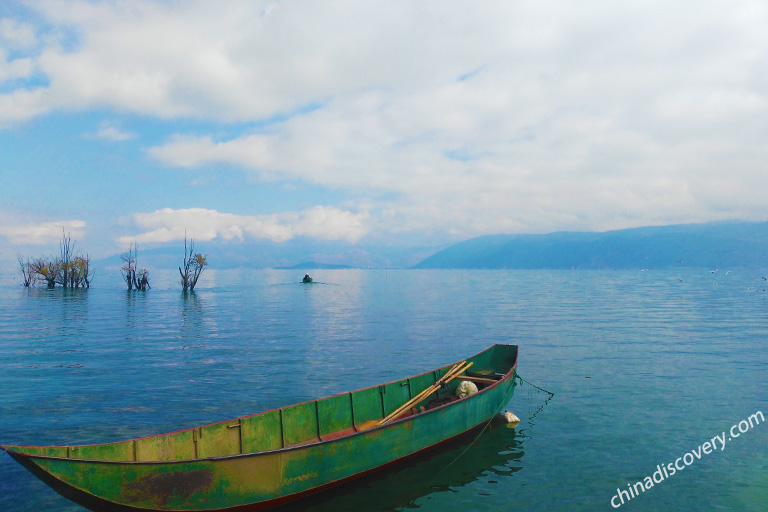
Type: Garden Lake
Area: 210,000sq m
Best Travel Time: All the Year Round
Ticket Information: Free Visiting
Open Hours: 07:00~23:00
Recommended Visiting:2 ~ 3 hrs
Location:No.67 Cuihu South Rd, Wuhua District, Kunming City, Yunnan Province.
The Kunming Green Lake, former Nine Dragon Pond shaped from the waters of the nine springs is one of the most beautiful gardens in Kunming. Located in west Wuhua Mountain, it is praised as an emerald inlaid in Kunming City with the best central viewings. Huge cluster of verdant lotus in summer and crowds of red-billed gull flying from Siberia in winter are the best two highlights worth a look.
Spring Scenery of Green Lake is one of the eight best landscape of Kunming listed in a prose poem about Kunming by Wang Sheng during Yuan Dynasty. Named for the extremely green of water in all seasons and willows along the enbankment, Green Lake offers special beauty and local culture, for the national famous Yunnan University and site where great writers Shen Congwen, Zhu Ziqing and Wu Mi discussed history, enjoy tea and explore good reads locates nearby.
Visitors can get into the park from four entrances in four directions and tour the five parts separated by the south-north Ruan Embankment and east-west Tang Embankment. In Westside, Yunnan Military Academy, a two-stored building painted yellow, is the Top 3 military academies of China and furnace of Chinese revolution. Then pass through the Nine-bend Bridge, the Statue of Nie Er on Southwestern Island, Fish-watching Tower, Osmanthus Garden are spots to enjoy the inner beauty. In North Gate, locals often walk around the lake and show individual talents in the Green Lake, such as distinctive circle dances, excellent water writing on the ground. Besides, there are more spots within the lake to visit, including Mid-lake Pavilion and Nine Dragon Pool in north, Bamboo Island in east and Goldfish Island in southeast.
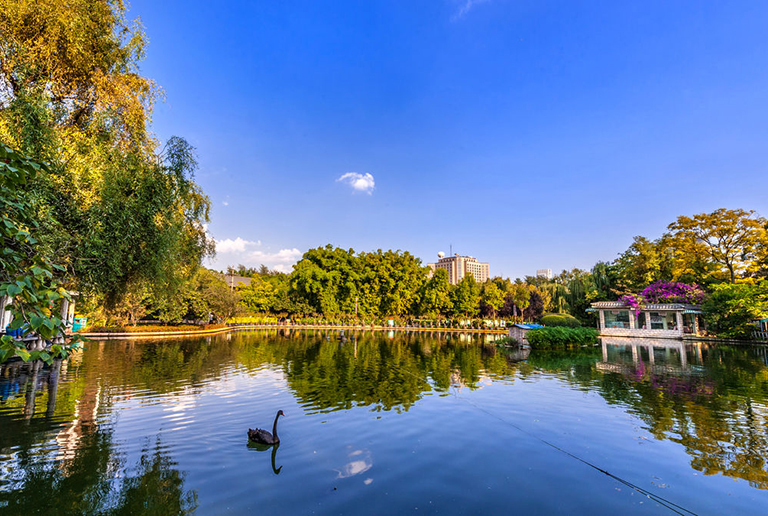
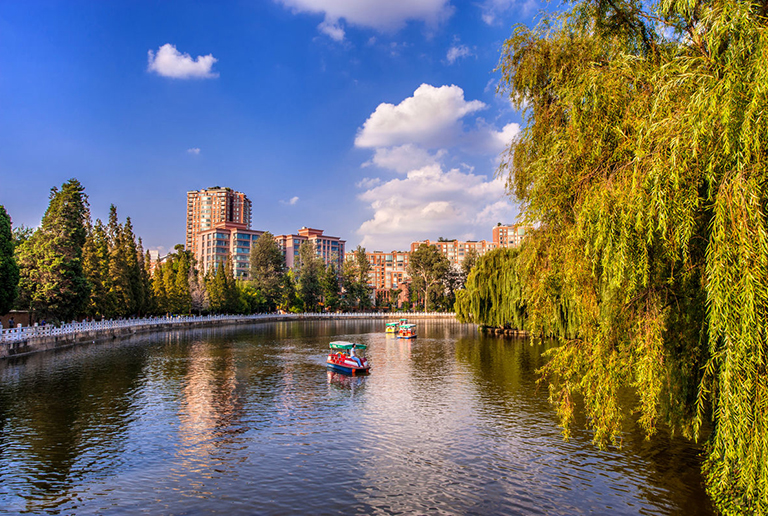
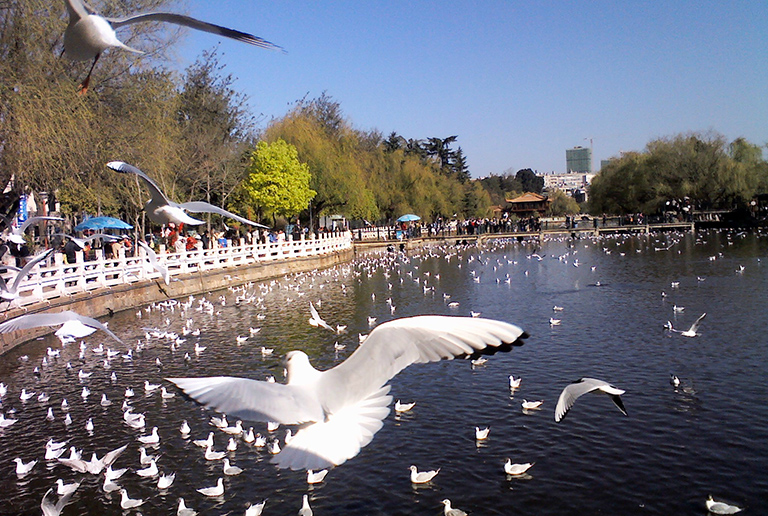
Type: Man-made Lake
Area: 573sq km (greatest depth: 100m)
Best Travel Time: September ~ November (Autumn)
Ticket Information: 150RMB (March ~ November) & 120RMB (December ~ February); 65RMB for Boating.
Recommended Visiting:5~6 hrs
Location: Menggu Rd, Chunan County, Hangzhou City, Zhejiang Province.
Formed as a reservoir of the Xinanjiang Hydropower Station - China’s first large-scale self-designed and constructed hydro power station, Thousand-island Lake is a National AAAAA scenic area and the famous lake with the most islands in the world. Thousand-island Lake is praised the Most Clean Water in the World for the its high quality of national first class level, which can be drunk directly. The impoundage of Thousand-island Lake is 17.84 billion cubic meters, 3000 times that of West Lake.
Beauty of Thousand-island Lakes lies in the fascinating green and purity. At the first sight, undulating hills in the distant pile into multiple layers, engrained in the green and luxuriant splash-ink landscape paintings of blue sky, jade lake, and star-studded islands. Natural color transition between each island makes up a harmony of various green in the beautiful lake. More surprisingly, waters in Thousand-island Lake shows different color in different season and weather, green with yellow in Spring, emerald green in Summer, crystal like in Autumn and turns into dark jade in Winter, and seems wear a white gauze in foggy days.
Divided into five regions (the southeast, southwest, northeast, northwest and middle), the Thousand-island Lake looks like a phoenix spreading wings from bird’s view. Central and southeast lake districts are the two main scenic areas. In central lake area, there are many major scenic spots, the Meifengguan Island in Zhuangyuan Byland is the best viewing site of the over 300 islands around and the flying dragon like Dragon Mountain Island is a treasury of ancient culture of Chunan, Yule Island in central lake is the transfer station and a comprehensive tourist leisure within the water maze of dozens of islands and Moonlight Island is the most unique island in poetic romance, where fives gardens presents a charming scenery. In southeast lake area, Huangshan Peak gets the best view of the Chinese character (公) made up of lots of green islands. And tourists can visit Osmanthus Island to watch crowds of wild osmanthus trees and Tianchi Island, an old quarry site digged during Southern Song Dynasty.
Notice: Tours can only visit one scenic area within Thousand-island Lake, next day tour need extra service charges excluded in the ticket fees.
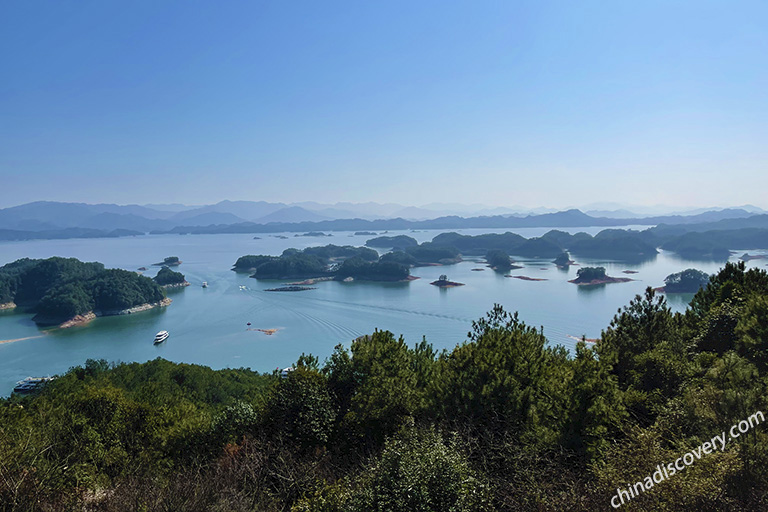
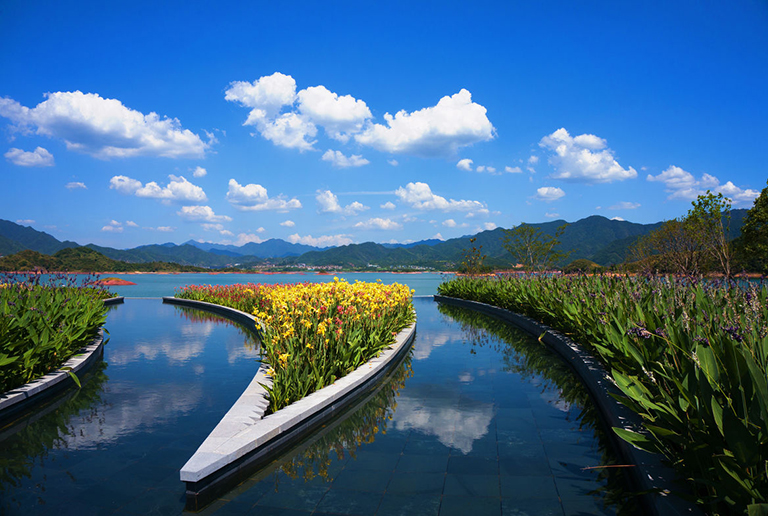
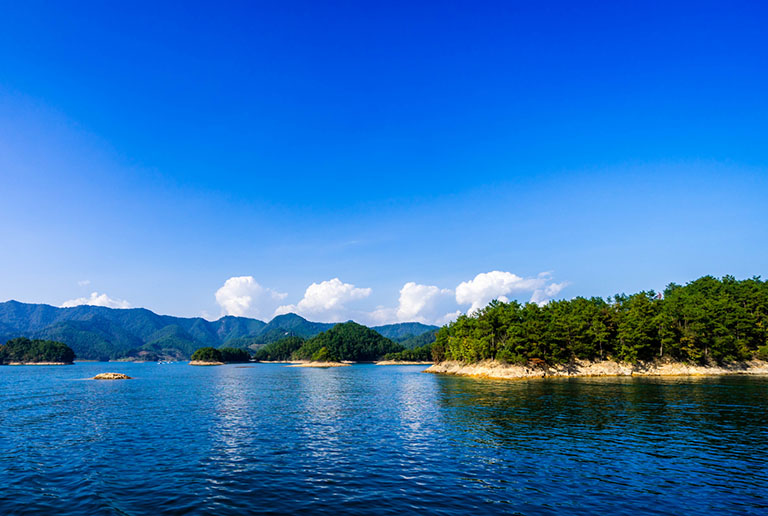
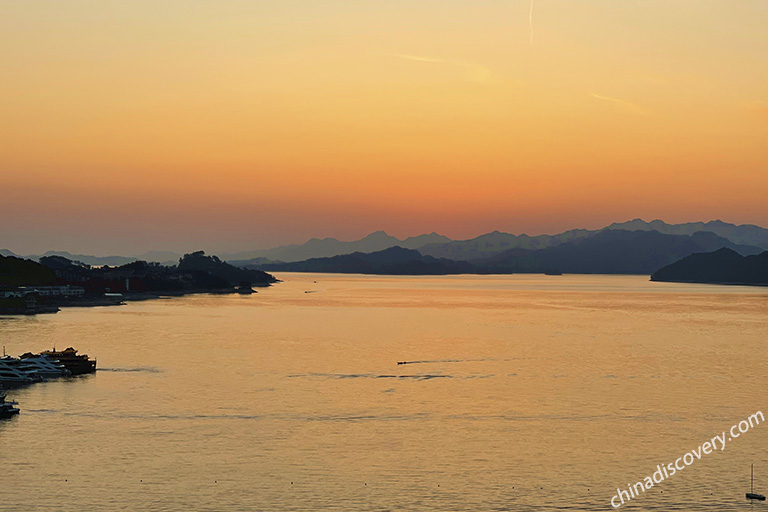
If you want to get rid of hustle of public transportation and troublesome navigation, you can take a private tour package which covers sightseeing, dining and transfer from us. Our local tour guide and driver will escort you to any destinations with speed and convenience, and take care of all the details. You just need to focus on sightseeing.
If you have more questions about beautiful lakes in China, please feel free to contact us and our professional travel consultants are here ready to help!
Top 3 tours chosen by most customers to explore in the best way. Check the detailed itinerary, or tailor your own trip now with us.
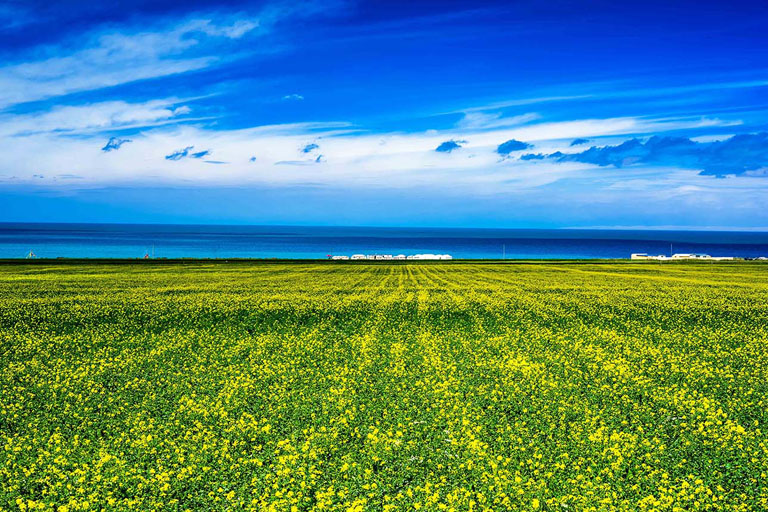
Xining / Qinghai Lake
Start planning your tailor-made holiday to China by contacting one of our specialists. Once inquired, you’ll get a response within 0.5~23.5 hours.
Customize a Trip